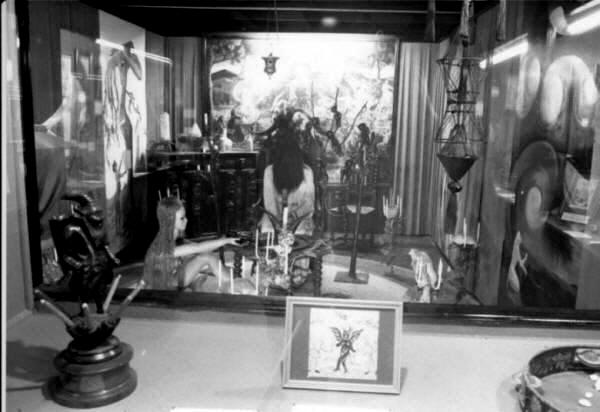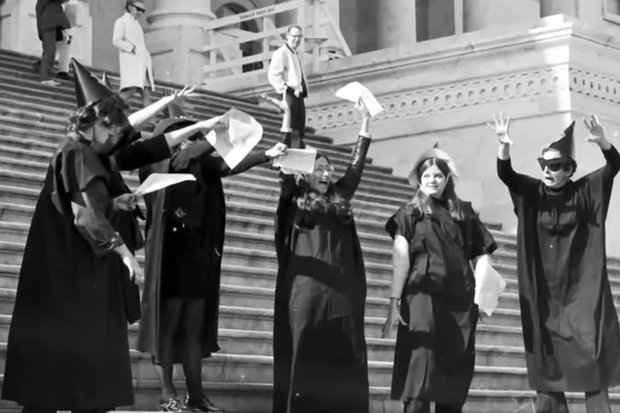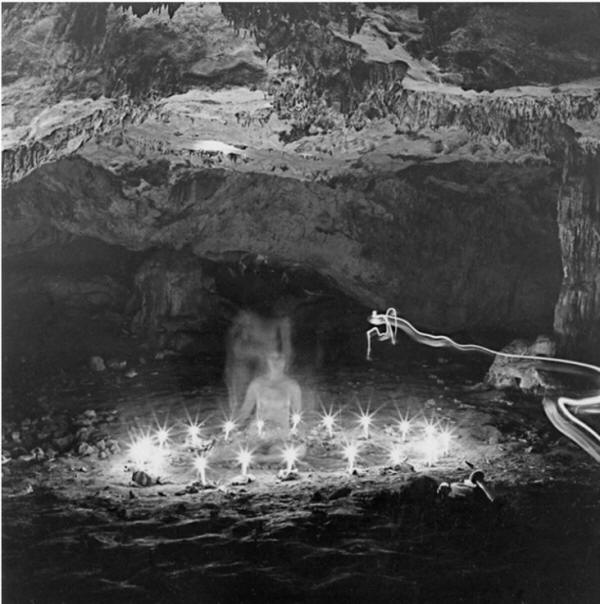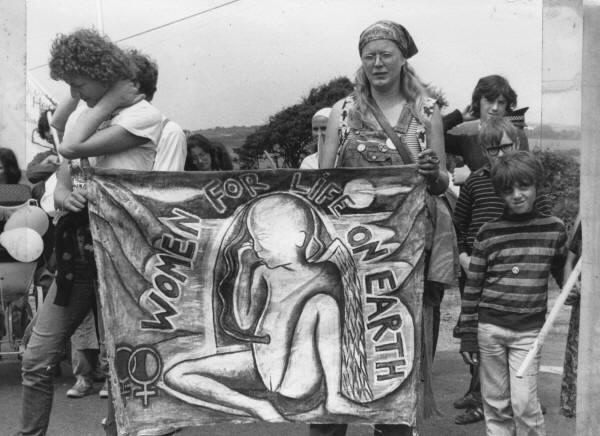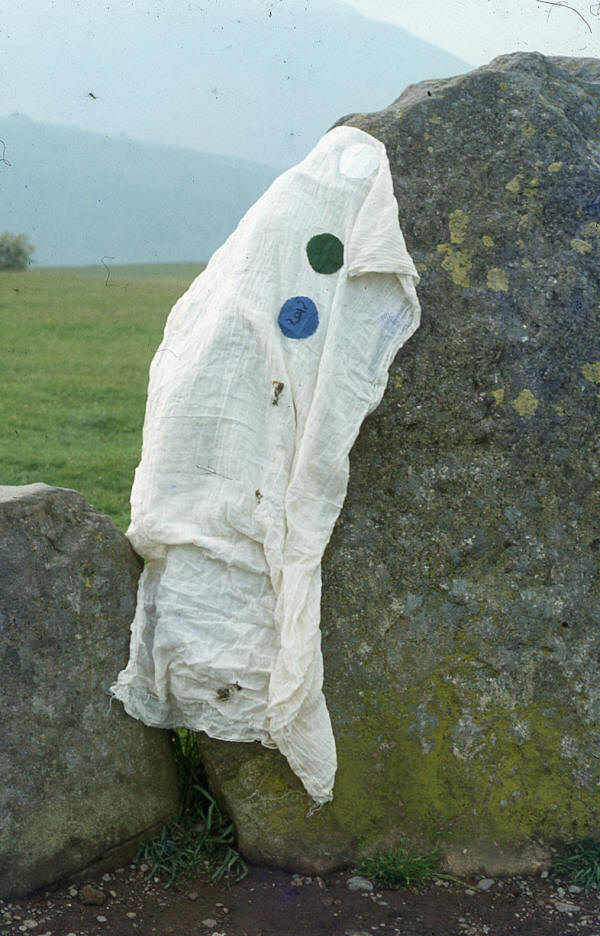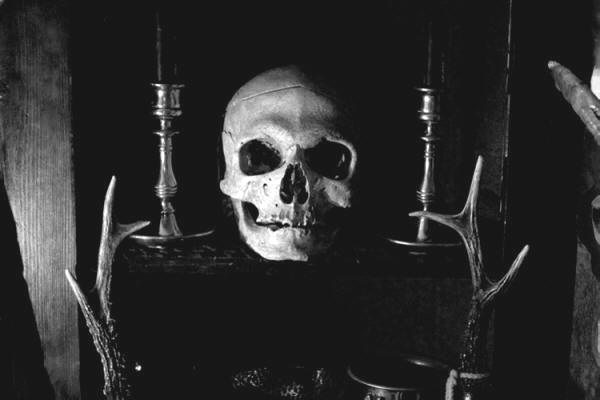|
|
| home | exhibitions | interviews | features | profiles | webprojects | archive |
|
The Sword of Wisdom: art, feminism and witchcraft Rupert White
The second half of the 19th century saw a rise of interest in spiritualism, mysticism and the occult. These new forms of spirituality emerged at a time when Western society, with the growth of science and technology, was becoming rapidly secularised and subject to processes of desacralisation and disenchantment (referred to by Weber as 'Entzauberung'). In his biography poet WB Yeats puts it thus: "I am very religious, and deprived by Huxley and Tyndall, whom I detested, of the simple-minded religion of my childhood, I had made a new religion, almost an infallible Church of poetic tradition, of a fardel of stories, and of personages, and of emotions...". Yeats here is partly alluding to his membership of The Hermetic Order of the Golden Dawn, which was the most influential magical group of the Victorian occult revival. Its first temple, the Isis-Uriania, was founded in London in 1888. The group's grade structures and rituals drew heavily from both Freemasonry and Rosi-crucianism, and initiates were required to undergo an intense period of study in order to understand the intricacies of hermeticism, alchemy, the Qabalah, the tarot, and other related systems. Importantly, the Golden Dawn was as open to women as it was to men, and showed no obvious sexual bias. Accordingly, its followers included a number of other poets, writers and artists, such Aleister Crowley, Maud Gonne, Florence Farr, AE Waite, Moina Mathers, Pamela Coleman-Smith and Arthur Machen. The artist Ithell Colquhoun, who had a studio in Cornwall from 1949 onwards, was too young to be a member herself. However she spent her life exploring the Western mystical tradition - in particular studying the Golden Dawn’s ideas and practice - and in 1975 she wrote its first definitive history entitled 'The Sword of Wisdom'. She was one of a number of Surrealist artists, including Kurt Seligman, Max Ernst and Leonora Carrington, who were interested in the occult, though arguably none of them pursued it with as much conviction and tenacity as she did.
In 1954 Colquhoun’s research endeavors took her up to the Isle of Man to visit The Museum of Witchcraft, opened a few years earlier by Cecil Williamson. There she met Gerald Gardner, the 'resident witch' whose book, 'Witchcraft Today', had just been published. Gardner's book described Wica (or Wicca); a form of modern witchcraft that borrowed aspects of ritual practice, such as initiation ceremonies and cast magic circles from the Golden Dawn, but re-imagined them so they were simpler and more accessible. Whereas the Golden Dawn drew on imagery from Egypt and classical antiquity, Gardner's system was more closely aligned to the English landscape and the changing seasons, with the term 'witchcraft' evocative of traditional North European folkloric representations. His form of modern witchcraft also promoted paired gods, one of each sex: a female triple-goddess and a male horned god, evening up the patriarchal bias of other revealed religions. Williamson's Museum of Witchcraft moved to Cornwall in 1960, where it reopened in Boscastle (pictured above). Meanwhile Gardner's witchcraft, or Wicca, was taken up with enthusiasm by the burgeoning Neo-Pagan movement, both in Europe and the States. It was in the US that Wicca quickly became politicised, as second-wave feminists started questioning the patriarchal basis of society and religion, and identifying strongly with the 17th century witches who were the persecuted victims of witch-trials. In the 1960's, feminist protest group W.I.T.C.H. formed (pictured below on the steps of the NY Stock Exchange), as did 'Dianic' or all-women covens, and in the 1970's seminal books, like Mary Daly's 'Beyond God the Father', Merlin Stone's 'When God Was a Woman' and Starhawk's 'The Spiral Dance', were published.
In 1977 American feminist artist Mary Beth Edelson sold her car in order to finance a trip to Yugoslavia. Inspired by the archaeologist Marija Gimbutas and her descriptions of ancient matrifocal societies, she visited the Grapceva caves in order to perform rituals to the Goddess (below). Edelson was a founding member of the Heresies collective: a group of artists and writers who put together a women's art magazine based in New York. In 1979 Edelson contributed an account of her Yugoslavian trip to Heresies #5: 'The Great Goddess'. The art critic Lucy Lippard, another of the Heresies group, responded to much of the artwork of this period in her book 'Overlay', published in 1981. As she puts it in the book, "artists working today from models of the distant past are consciously or unconsciously overlaying their knowledge of science and ancient history on primal forms that remain mysterious to us despite this knowledge".
One of the artists featured in 'Overlay' is the Swedish artist Monica Sjöö, who corresponded with Lippard in 1978, when Lippard lived - briefly - on Dartmoor. Sjöö was based in Bristol for most of her life, and probably did more than any other artist in Europe to promote Goddess spirituality. Her powerful early painting 'God Giving Birth' (1968), was a premonition of these later developments, and is considered to have kick-started feminist art in the UK, when shown and banned – with much accompanying brouhaha – in St Ives in 1970 (cf Margaret Harrison in Studio International (1977), Parker and Pollock 'Framing Feminism' (1987)). In the mid-70's Sjöö wrote for 'Womanspirit' magazine based in the States. The magazine subsequently helped her publish her book 'The Ancient Religion of the Great Cosmic Mother of all' (1981), and introduced her to a new generation of American artists and Neo-pagans. Sjöö's publication, was later described by Alice Walker as "one of the most important books I've ever read, if not the most important". Sjoo's 'Cosmic Mother' came out the same year that the Greenham Common protests started (1981), and it was partly because of the peace camps that Monica Sjöö subsequently became a close friend to artist Jill Smith. (Photo below is of Sjöö on a 1982 peace march wearing a headscarf, and carrying a banner of her own design). Smith had recently separated from her partner the artist Bruce Lacey, and like Sjöö, had developed a deep emotional and spiritual attachment to the ancient sites of the UK. Both women, for this reason, were regular visitors to West Cornwall and other sacred landscapes. (In 1985, for example, they were joined by Starhawk and together took part in a quasi-magical protest called 'Women Reclaim Salisbury Plain').
Jill Smith trained at RADA, and in the late 1970's had created a range of colourful costumes that embodied the different elements of air, fire, earth and water in which to perform rituals at the sites. However, after she separated from Lacey, the props and costumes were largely abandoned, and in 1982, after studying a form of Tibetan Buddhism called Dzog Chen, Smith carried out a ritual journey linking the stone circles of Cornwall (Boscawen Un) to those of Scotland (Callanish), which she simply called 'Awakening'. She was alone, slept in the open air, and carried little with her apart from a ghostly white 'frock' marked with Tibetan symbols (below photographed at Callanish). As she has said recently: “I saw Britain as the body of the goddess. It was like I was becoming the land: I was becoming Britain. These places were coming into me, and it was massively powerful.”
At midnight on Halloween in 1996, the Museum of Witchcraft in Boscastle was sold by Cecil Williamson to Graham King. However by this time Gerald Gardner’s claims for Wicca were being brought into question by books like Professor Ronald Hutton's 'Pagan Religions of the Ancient British Isles' (1991), and as a result, for many Neo-Pagans, Wicca became less appealing. Instead in the last twenty years there has been an increased interest in folk magic and traditional witchcraft. These developments have been reflected in the addition of the word ‘magic’ to the museum’s title, its collection now under the stewardship of new owner Simon Costin and curators Peter and Judith Hewitt.
The shift towards traditional witchcraft is also reflected in the work of witch, artist and writer, Gemma Gary. West Cornwall based Gary and her partner, photographer Jane Cox, founded the publishing house Troy Books in 2008 (photo above is by Jane Cox). As well as producing editions of Gary’s own writings and artwork, Troy Books publishes authors including Graham King, Steve Patterson and Cheryl Straffon, the latter of whom is the founding editor of the magazines 'Meyn Mamvro' and 'Goddess Alive!' (for both of which Sjöö and Smith occasionally wrote). Gary has acknowledged the multi-layered nature of contemporary paganism, and the opportunity it presents for creative reinterpretation: "now when we enter into Craft initiation we knowingly take on the mantle of traditions developed more recently: we can know and cherish it for what it truly is; two or three generations of occult and Neo-Pagan experimentation and innovation". Gary’s work continues to inspire both contemporary artists and pagan practitioners alike, and it is clear, in reflecting on the interweaving lives and practices of even this small selection of influential figures, that division between the activities of pagans, activists and artists can be difficult - and sometimes impossible - to make.
Essay written for Hummadruz at Newlyn Art Gallery. Rupert White is the author of 'The Re-enchanted Landscape: Earth Mysteries, Paganism and Art in Cornwall 1950-2000'.For more on Jill Smith see 'interviews': http://artcornwall.org/interviews/Jill_Smith_aka_Jill_Bruce2.htm. Ronald Hutton's foreword to 'The Re-enchanted Landscape' is in 'features': http://artcornwall.org/features/The_Pagan_Coast_Ronald_Hutton.htm |
|
|

